10 things to consider for your CMS intranet

When considering an intranet CMS for your organization, the volume of options and choices can seem overwhelming. How do you know what to look for? What features are critical, and which are just ‘nice to have’ ?
We explore what should make the cut on your intranet CMS wishlist.
The intranet has enjoyed continuous innovation and development over the past few decades, but its core value proposition remains the same: it is designed to share knowledge and information.
Content creation and management, therefore, is the foundation of a successful intranet. Choosing the right intranet CMS is a critical part of the process of selection, but in a crowded market, it can be difficult to decide what’s important.
The traditional intranet content management system was also built on the premise of broadcasting: information was disseminated top-down, from management to employee. But the way we work in today’s digital workplace has changed. When selecting an employee intranet CMS, we need to take another look at what our organization and our staff actually need – and will use.
The intranet’s core value proposition remains the same: it is designed to share knowledge and information.
No two organizations will have the same requirements, but there are some simple universal questions that can get you started.
Download the essential intranet guide today
1. Are we building or buying our intranet CMS?
It’s common for large in-house IT teams to look into building an intranet on a Content Management System (CMS), such as Joomla, Drupal, or WordPress, or even a Document Management System (DMS), such as SharePoint.

Considerations such as technology stack preference/existing use, budget or resource availability, customization requirements, accessibility needs and more can all come into play when weighing up the build vs. buy argument.
It’s important to remember that despite the similarities in terms of functionality, an intranet and a website are very distinct from one another: serving different audiences and different purposes.
Specialist knowledge and strategic support may be needed to get your intranet off the ground and delivering value. Some of the desirable features may fall outside the experience of in-house teams; some may not be supported by the selected CMS.
SharePoint is a prime example. Previously a go-to option for custom build intranet systems when used as an on-premise document management solution, SharePoint as part of the Office package seemed a no-brainer. With the shifting trend towards cloud-based document storage, however, customization that could be previously be achieved with the on-premise versions is no longer supported by Microsoft’s online rendition.
Download the essential intranet guide today
An intranet also isn’t static: it will require continuous investment and innovation to keep it relevant and used. Do you have the necessary resource to commit to a custom build? Can you dedicate development time to its upkeep? Deciding whether to keep your CMS intranet project in-house or to look for a third-party specialist provider is the first consideration.
2. Will it play nice with our existing tools and systems?
In today’s digital workplace, no piece of software can operate in isolation.
Today’s intranet should operate as the heart of your digital workplace: the central, go-to access point for staff to get what they need to do their jobs.
Thankfully, this is something most developers are coming to realize. Once, it would have been unthought-of to allow access to a third-party app when developing a piece of business software. Now, integration capability is one of the biggest areas of investment.
When shopping for the best intranet CMS for your business, the first thing to look at is what you already have in your toolbox.
Will your chosen solution synchronize with your existing employee directory, for example? If you have hundreds or thousands of staff on your books, central management of their profiles isn’t just a nice-to-have: it’s crucial. Active Directory and Azure Active Directory are among the top-ranking solutions used by business; check your CMS will allow you to pull in information from the directory and automatically sync when changes are made.
Then, there’s the rest of your toolbox. Today’s intranet should operate as the heart of your digital workplace: the central, go-to access point for staff to get what they need to do their jobs.
Integration with existing document management systems such as SharePoint, Dropbox or the G Suite is essential. You may have existing HR or payroll systems that staff use frequently that also need to be considered. Then, there’s existing small group communications such as Microsoft Teams or Yammer, productivity or task-based tools such as ZenDesk or Trello, and more.
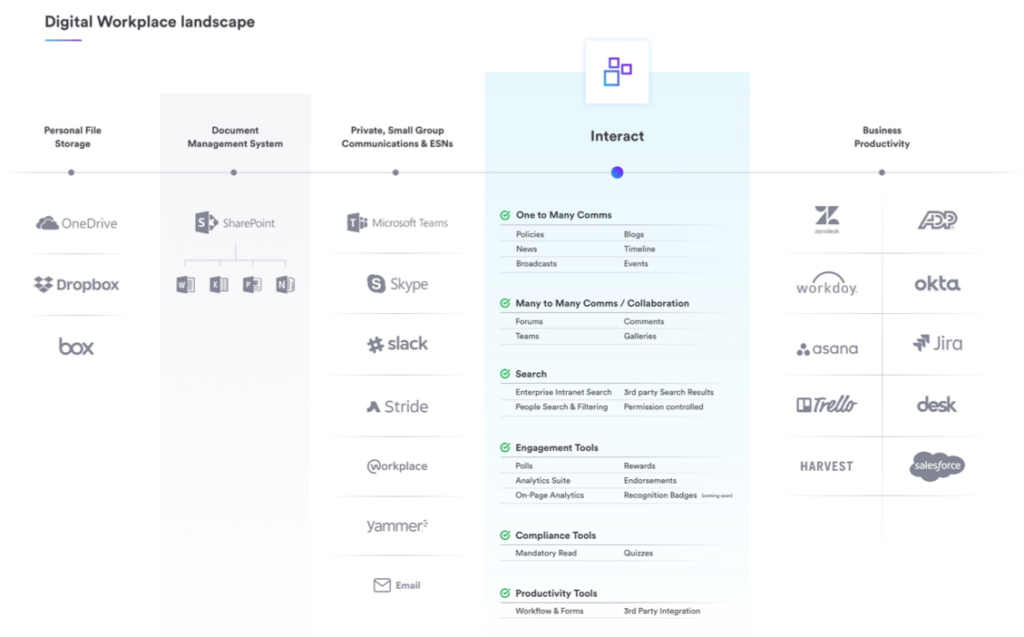
Take an audit of the different tools your staff use. Be aware that in today’s BYOD/BYOA environment, preference may vary from one department to the next.
Perhaps not every tool needs to integrate with your intranet: but it’s good to go in armed with your top-rankers, and understand how your CMS can integrate and support them.
3. How easy is the intranet CMS to use?
One of the biggest indicators of success for an intranet – or, indeed, any piece of software – is adoption rate.
Getting users onboarded, trained and using a new application can be one of the greatest challenges for any IT project. For an intranet in particular, where user-generated content and engagement is one of the biggest objectives, it is a fundamental requirement.

Ensuring users can ‘pick up and run’ with your new CMS employee intranet should be ranking top of the list of requirements. An intuitive, easy-to-use interface that utilizes functionality staff recognize from their personal app use – such as @mentioning, #tagging, liking, commenting, sharing, drag-and-drop – significantly improves adoption rate.
An intranet CMS that anyone can use shifts the long-term burden and responsibility from IT.
Creating content should be just as simple. Consider the options available for users to upload, build and link content to create pages or write blogs on your intranet. If your intranet CMS solution requires users to go via IT every time they want a piece of content added, or calls for HTML or CSS knowledge to format a page the way they want it to look, you’ve already lost the adoption battle.
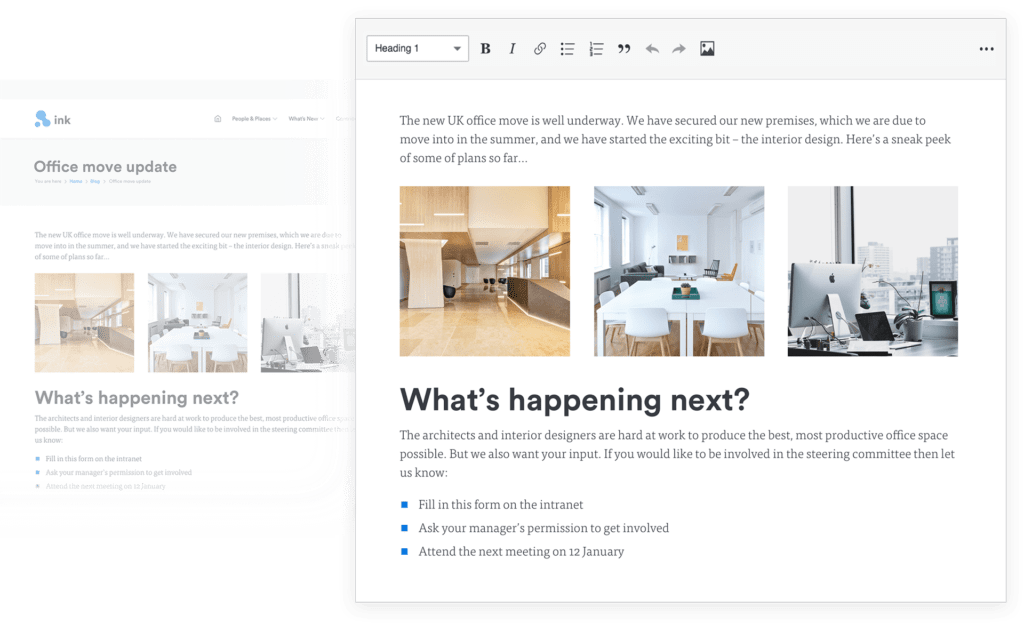
Road-testing the user experience with task-orientated challenges using a diverse range of staff will ensure you get the right solution.
What’s more, an intranet CMS that anyone can use shifts the long-term burden and responsibility from IT – saving time and resource, getting more content posted, and ensuring everyone gets value from the platform.
Download the essential intranet guide today
4. Can I mix it up with rich content types?
It should go without saying that in today’s visually-driven digital world, we can’t be giving users a static, text-only platform. The minute we upload a library of Word and PDF documents and ask our staff to engage, we’ll get that glazed look: and our intranet will fall flat on its face.
That’s not to say that the ability to add documents isn’t crucial. However, diversity in content types will deliver the best possible engagement: we’re talking images, video, audio, quizzes and polls, embedding slidedecks, infographics, your Twitter feed and more.
Look for a CMS that gives users the flexibility and capacity to mix it up, without having to go down the route of manually adding HTML.
A WYSIWYG editor, for example, with widgets for adding YouTube videos, images from a media library, a poll or audio file, is simple for even non-technical users to get going with.
Modular homepages that allow easy drag-and-drop of widgets or pull in third-party content such as Slack channels, Zendesk tickets or even your Twitter feed also create a visual, interactive and engaging experience for users – without the need for IT support.
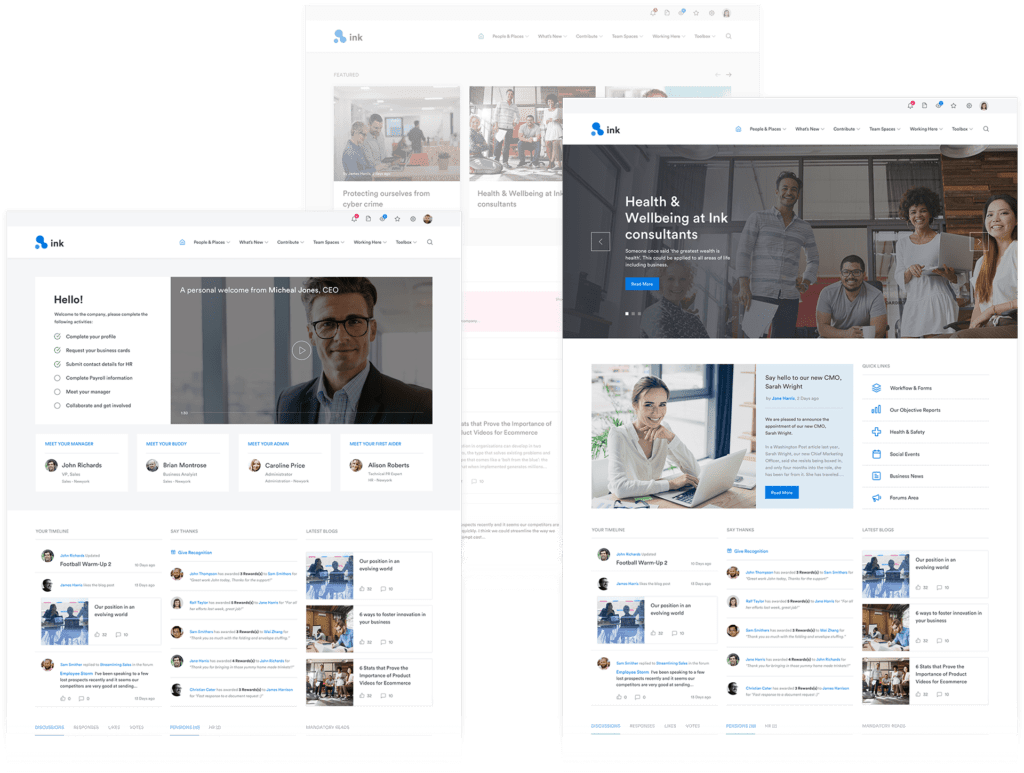
Admittedly, rich content is now assumed to come as standard. But surprisingly, the business communications market is continually to lag behind consumer technology. When choosing a provider, ask about their product roadmap and the forms of content they support.
5. Can I make it my own?
When Facebook Workplace came onto the market, it seemed to offer an ideal solution for those looking to drive adoption of an off-the-shelf enterprise social network (ESN). A recognizable interface our staff already use daily, with added functionality for work?
A win-win, surely?
However, one of its greatest limitations was just that: it was still Facebook Workplace. Apart from adding your own corporate logo, it offered absolutely no means for branding or personalization.
The ability to customize your intranet CMS software in line with your organizational brand, culture, needs and structure is often under-estimated.
Giving your intranet an identity and a structure that reflects how you operate as an organization instils pride and a sense of ownership, is easier for employees to navigate, and becomes part of the business vocabulary. A customized intranet that aligns with your brand is also shown to have a significant impact on adoption and buy-in from users.
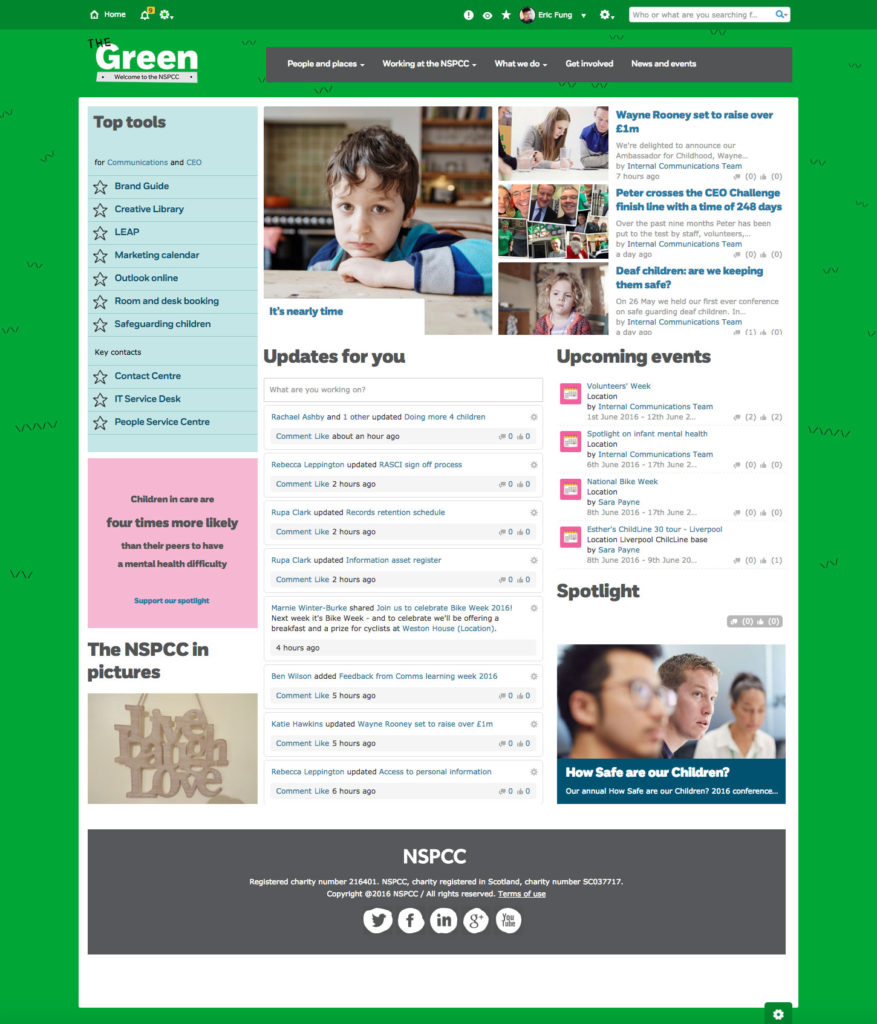
Not all organizations operate to a traditional hierarchal structure or organize their information in the same way; the autonomy to exercise control over your own user segregation and teams, content management, navigation and information architecture are also all important.
Add to your intranet content management system checklist to ability to change:
- Your intranet name and logo
- The brand color palette
- Fonts and typography
- Page designs and style sheets
- Icons, calls-to-action, and buttons
- Language or tone of voice
- Structure, IA, and navigation
- Content or information you choose to host
Customization of the CMS may seem like a ‘nice to have’ on paper, but it will deliver returns in the long-run.
Download the essential intranet guide today
6. Does it facilitate two-way communication?
We already highlighted a shift away from top-down broadcasting as the foundational principle of business communication.
Now, it’s all about conversations.

A historical intranet may have been a policy and document store with the odd management news item or announcement thrown in – but today, that simply isn’t going to fly. Two-way communication is a must-have for your employee intranet CMS.
This comes down in part to the specific features available. Social tools including discussion and idea forums, timelines or voting and polls all empower staff with a voice. This can prove invaluable for tapping into staff innovations, receiving feedback, getting a pulse of the level of employee engagement with the organization and more.
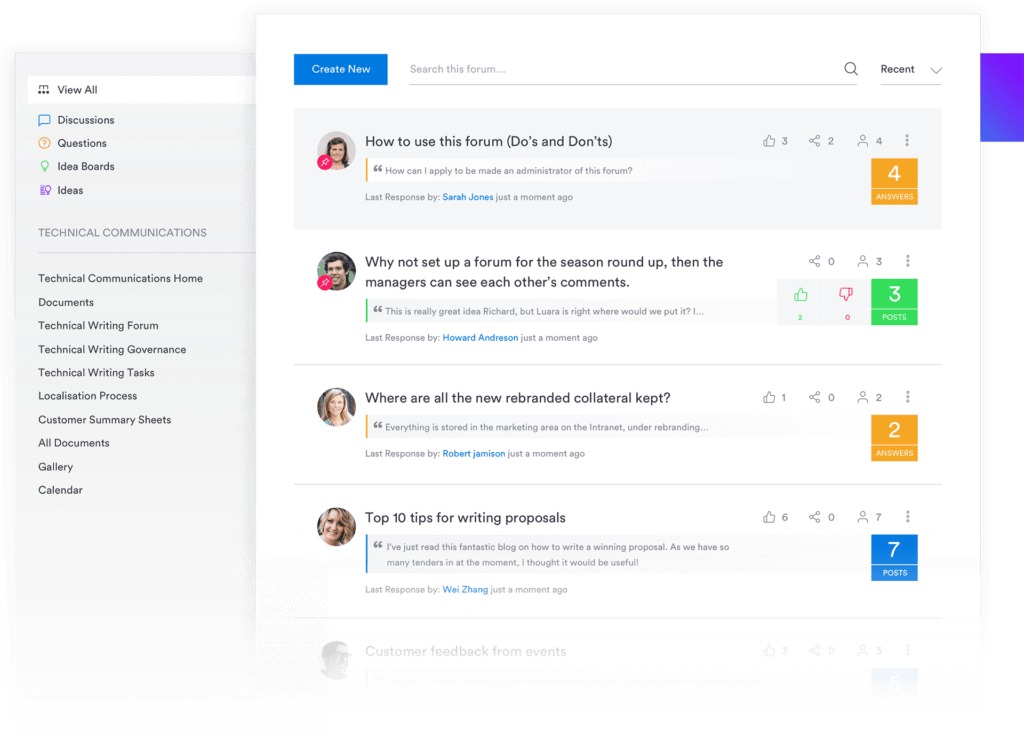
However, when choosing your intranet content management system, even small capabilities make a difference.
Can staff like, comment and share content created by others? Can they create their own content, such as blogs or pages? Join particular interest teams and identify and engage with colleagues from outside their immediate department?
If your organization already has an instant messaging platform embedded and actively used, how will the intranet work alongside it? Given the risk of adversity to change, it’s better to find a solution that will complement – rather than try to replace – any established communication tool. Integrating and embedding Slack or Skype channels into your intranet, for example, may be an ideal solution.
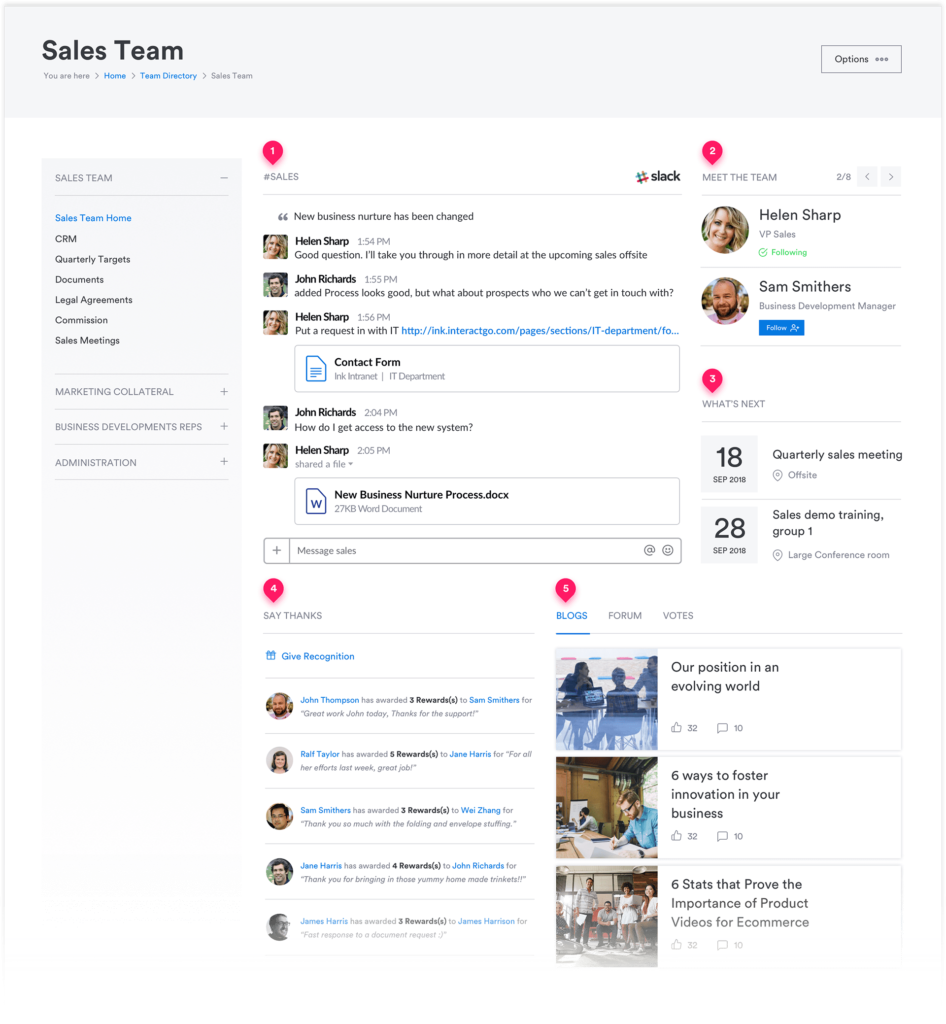
7. Does it come with version control, permissions and read acknowledgment?
There’s nothing worse than realizing you’ve overwritten or deleted a crucial business document. For a centralized content management system that will typically host vital compliance, legal or policy documentation, that’s a risk with even bigger repercussions.
Preventing the loss of business-critical content may be a dry one for the wishlist, but it’s also arguably one of the most important. For industry sectors that are highly regulated and may face auditing on a regular basis, being able to demonstrate compliance can make or break an organization.

Controlling who can edit, approve and publish content within the different content areas of an intranet – particularly those hosting business-critical policies or information – can reduce the risk of deletion, overwriting, or unauthorised editing.
When compliance calls for demonstrating that staff have read and understood a particular policy or document, a digitalized acknowledgment system – where staff tick or e-sign to confirm they’ve read a particular document, can be reminded if they’ve failed to do so, and a digital report exported to that effect – can reduce the administrative burden. An intranet CMS should consider and support these requirements.
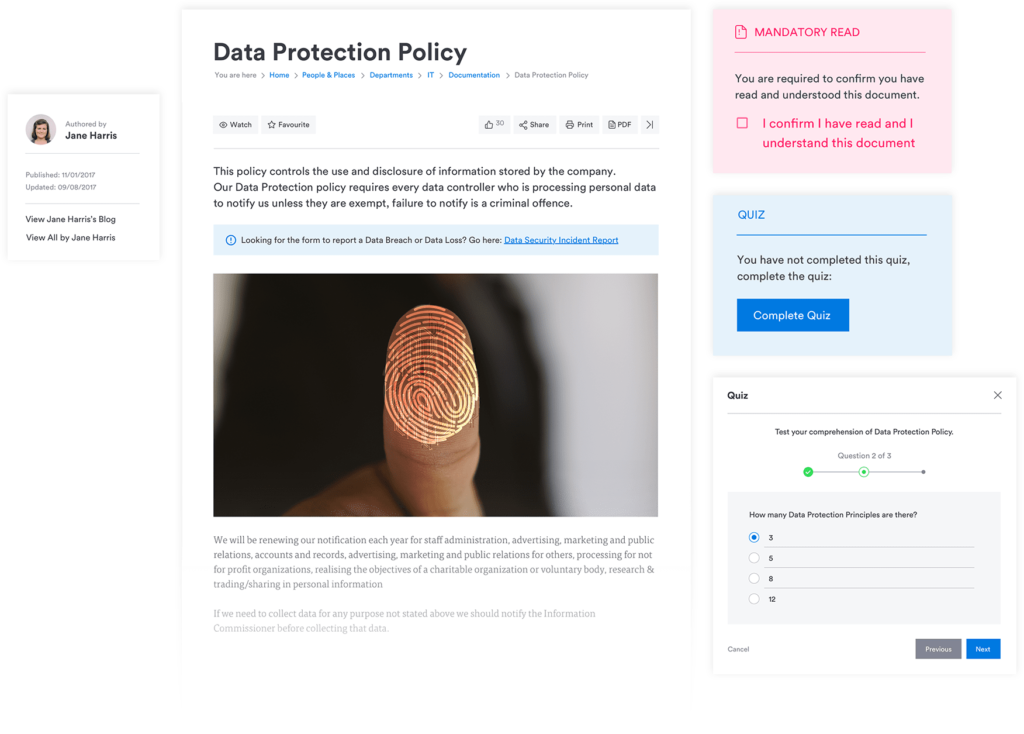
Select a content management system that includes an integrated audit trail, with the ability to show when key pieces of content were edited, and who by. Capacity to review or even roll back to previous versions when necessary will keep content centralized and secure. Assigning an approval process to alert senior managers when key pieces of content are changed adds an additional safeguard.
Finally, an intranet with built-in mandatory read functionality can digitalize many tiresome and time-consuming compliance processes.
Download the essential intranet guide today
8. Can we set review dates, alerts, and publication end dates to prevent content becoming redundant?
During a Customer Survey, we identified one of the greatest grievances users and intranet managers alike have about their old intranet systems: they become document dumping grounds.
Our Digital Manager Dave called it ‘the place where forms go to die’. It was really cluttered, nobody knew which file was the right version, what documents were up-to-date and people had different versions saved in different places.
Katherine Tedham, Planning and Internal Communications Officer, War Child
When you have a central place for business information and content, perhaps this isn’t a surprise. However, when users simply upload a new document every time it’s updated, it’s a situation that can rapidly spiral out of control.
Alongside permission controls to manage who can upload control where, a review and end publication date feature can ensure content doesn’t become outdated or redundant. When creating or uploading a piece of content, setting a review date will alert the designated author or owner when it’s time to check the content is still correct.
9. Will users be able to find what they need on our intranet CMS?
What use is content if it can’t be found?

A powerful search function is now a consumer expectation for any piece of technology. In today’s Google-era, we’re used to having answers at the click of the mouse (or, as voice-controlled AI tools grow in popularity, as quick as “Alexa, what’s the…”).
When initiating building up your intranet CMS, search may not seem essential. With the right top-level nav and structure, it should be intuitive for staff to find what they need.
But as your organization – and intranet – grow, those piles of documents, posts, blogs, files and information will spiral. A good search function will help the business:
- Find the right results
- Save time
- Save money
- Boost productivity
- Reduce frustration
- Decrease admin demand
- Reduce the workload on other departments
…and more.
What’s more, if you’re juggling a load of different platforms and applications, each with different information hidden away, an enterprise search is crucial. Helping users search just once and gain access to results indexed from across your hosted policies and documents, DMS, forums, blogs posts and more will prove invaluable.
Search should connect staff not just with information, but each other.
Ensure your intranet CMS offers search optimization functionality including the ability to tag content with keywords, assign relevant content as a ‘best bet’ against common search terms, and recognize or suggest alternatives when a search is misspelt. A report of search terms, volume, and those that fail to find results can help evolve and improve the experience for users.
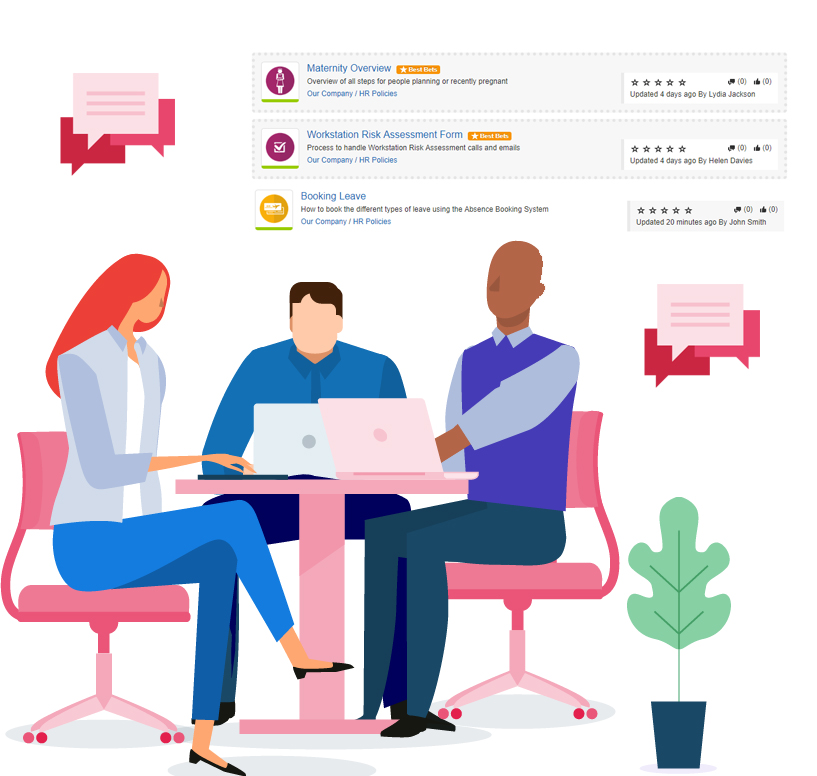
To take search to the next level, functionality such as search of user profiles to find a relevant expert or skill will really maximize the value of your intranet CMS.
For example, users searching for ‘security procedures’ who can’t find the answer they’re looking for in the content on your intranet can be pushed to the Security Officer as someone who will be best-placed to answer the question. Search should connect staff with not just information, but each other.
Download the essential intranet guide today
10. Can I continually evaluate and improve performance with the support of analytics data?

Staring at stats may not be the first thing that comes to mind when you hear the term ‘content management system’, but insights into how your intranet is performing are vital if you’re going to keep it relevant and delivering value for both business and employees.
Usage and analytics data can help identify:
- High-performing content areas that see the most traffic and interaction, such as comments or likes
- Content ‘risks’, such as content that is out of date, not generating any traffic, or not tagged up correctly
- Any content ‘gaps’, such as searches that have returned no results
- Who your main ‘influencers’ are on the intranet – those who contribute and respond to content regularly
- Conversely, those users you are failing to engage who made need additional training or support
- How your intranet is performing against benchmarks from others in your industry or sector
All these insights can help evolve and grow your intranet over time, as well as demonstrate the return on investment that those at the top will ask for.
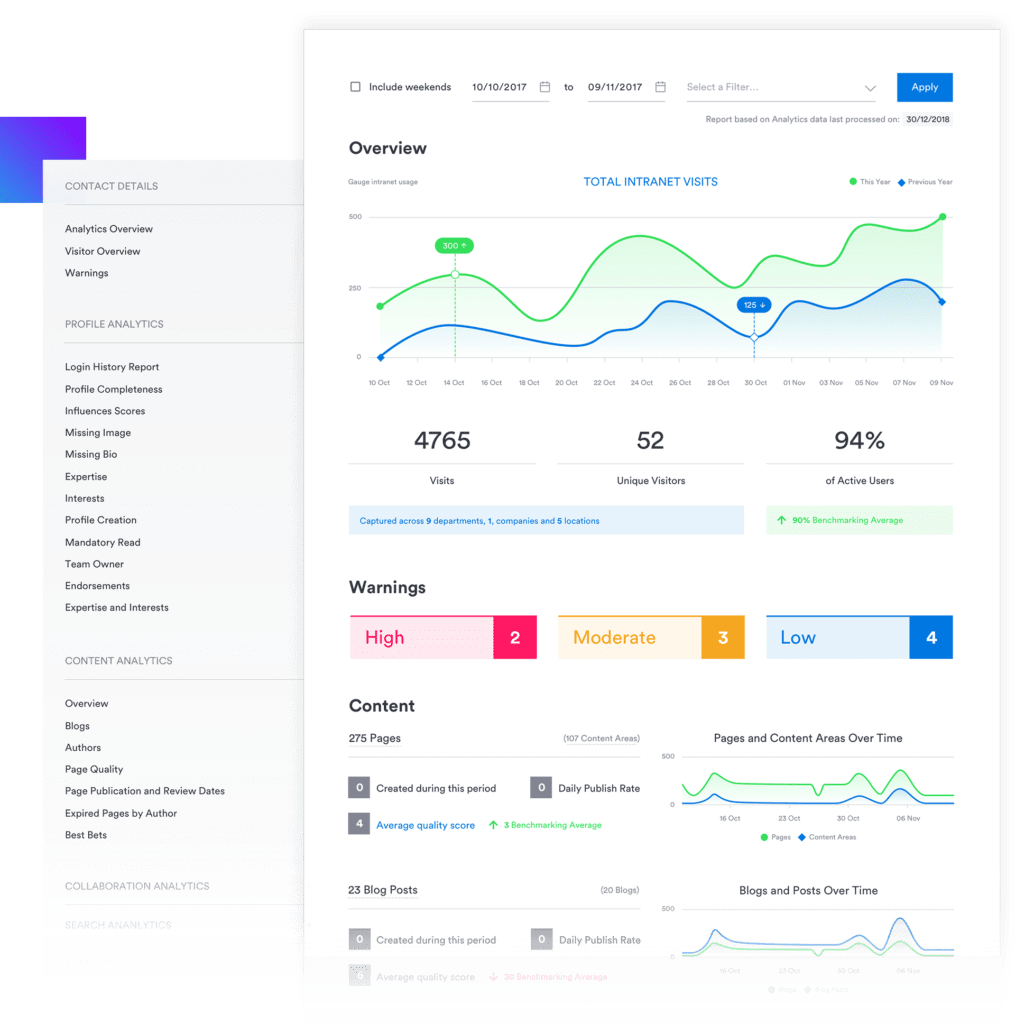
No two organizations are the same. While there may be best practices governing the best use of your intranet, it’s only by tracking success and learning from your own usage data that you’ll be able to understand what works for your business – and what doesn’t.
What’s the best CMS for an intranet?
As these questions probably demonstrate, there’s no single answer. Every organization looking for an intranet solution will have their own list of priorities and requirements.
However, there are some fundamental basics that every intranet CMS should offer.
When considering your options, take the time to look at what your different employee groups will need to do their day-to-day roles; the exiting technology used in your organization; and the role you see the intranet playing within your business. Research different providers and options.
Most importantly, look for a solution that can evolve and grow with you.
Technology develops and changes at an incredible rate. Your intranet is a long-term investment and when deployed successfully, will become deeply ingrained in your organization. A partner who can demonstrate a commitment to continuous innovation, development and keeping ahead of trends in the market will ensure you’re not left behind in the content management rat race.

